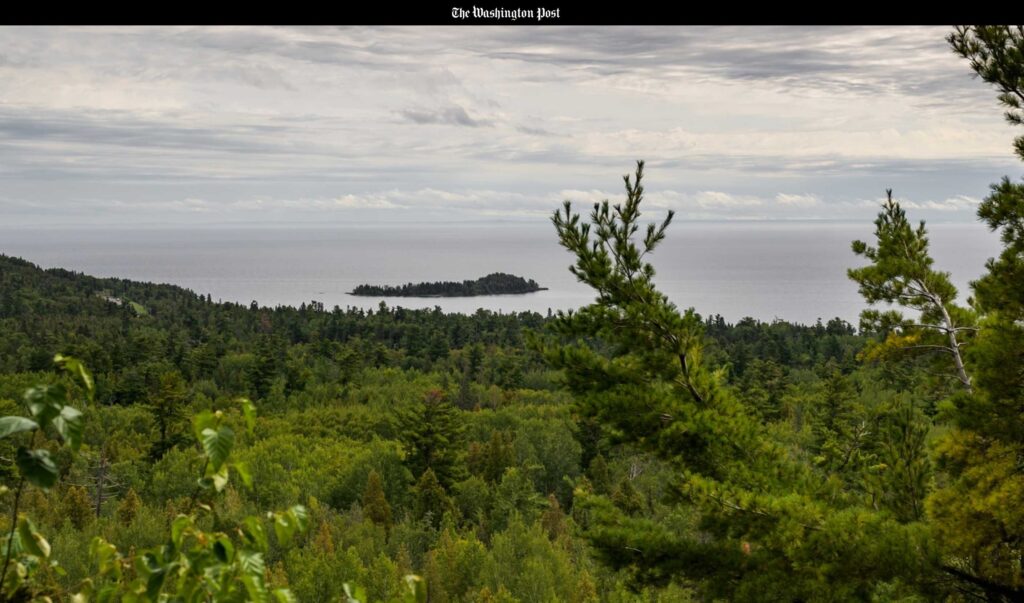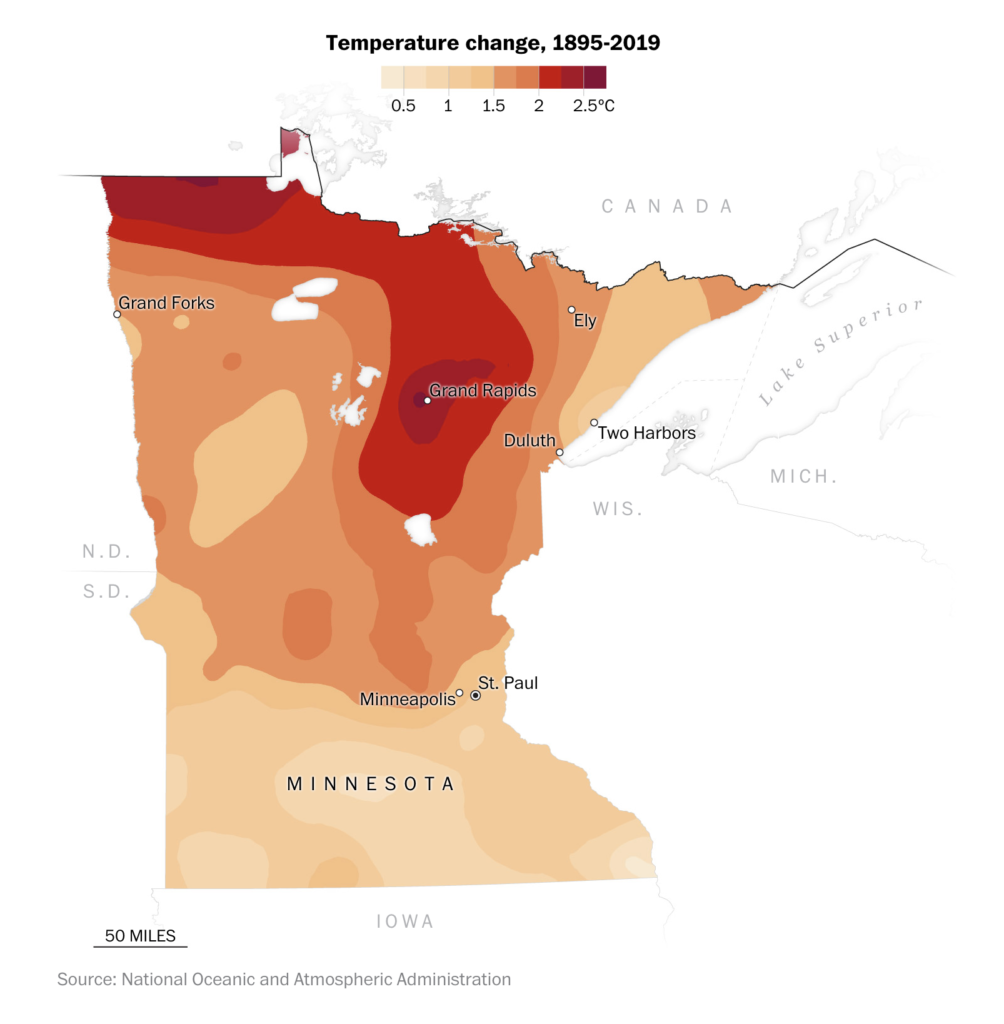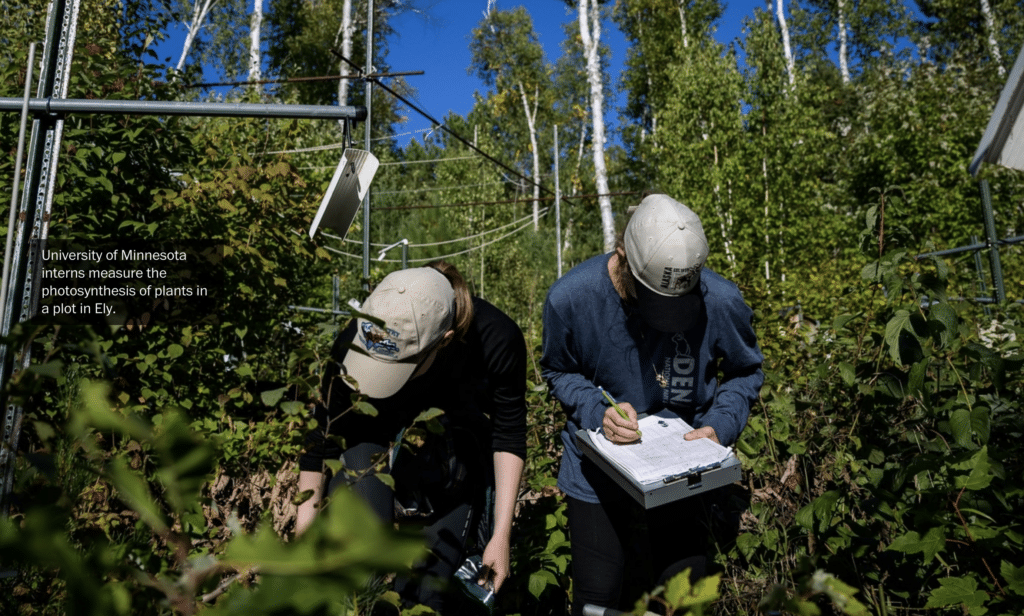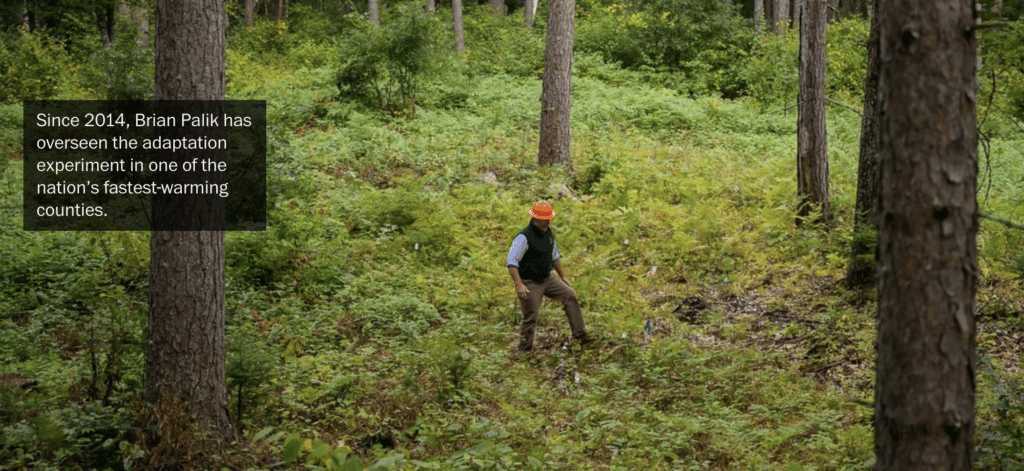
Climate change is causing rapid ecological shifts around the world — including northern Minnesota.
Here, it is not only changing the weather, but affecting the kinds of trees that grow. The Washington Post report “In fast-warming Minnesota, scientists are trying to plant the forests of the future” covers research projects underway on the effects of climate change on northern Minnesota’s forests, and plans for the future.
The Post’s journalists analyzed climate data from the past 124 years, and show how global warming is already having a significant effect on northern Minnesota’s forests.
A Washington Post analysis of historical temperature data found that seven counties in Minnesota have warmed more than 2 degrees Celsius since the late 19th century — about twice the global average. Winters here have warmed even faster, with 59 of the state’s counties — about two thirds — eclipsing the 2C threshold during the months of December through February.
– Washington Post, April 29, 2020

They begin with Dr. Lee Frelich of the University of Minnesota, who has raised alarm about how forests in the Boundary Waters region will be drastically affected by climate change. Frelich’s work has previously been covered in Quetico-Superior Wilderness News.
Almost everywhere he looks, Lee Frelich sees the fingerprints of climate change on the forests he has studied since he was a boy half a century ago.
Birds from southern Minnesota are now popping up far north in Ely, on the edge of the famous Boundary Waters Canoe Area Wilderness. Splashes of red maple leaves are now visible each fall amid the pines and spruces of the iconic North Woods, where they once would have been harder to find.
Frelich, the director of the University of Minnesota’s Center for Forest Ecology, thinks that if the state’s warming trend remains unchecked, such subtle changes will become starker and more devastating in the decades ahead. He thinks the boreal forests that soak up huge amounts of carbon dioxide from the atmosphere could disappear entirely, taking with them a third of the state’s native species of trees, flowers, birds and pollinators.
Reporter Brady Dennis and photographer Salwan Georges cover multiple experiments underway, visiting sites including the Chippewa National Forest, Ely, and Two Harbors.
Research includes artificially warming the air and soil in test plots to measure tree response, using computers to identify where certain species might survive in a changed climate, and planting trees not normally found in northern Minnesota, to see if they might replace native species that can’t handle what is to come. They talk to Peter Reich, a professor and forestry expert at the University of Minnesota:
“If the existing forests die and you don’t get fast enough recovery from other species, then you get a lot of problems,” Reich said, such as reduced water quality, more wildfires and air pollution, a crippled timber industry and the loss of wildlife. But “if you’ve helped it to adapt, you can help keep biodiversity.”
Year after year, both in Cloquet and at another test site several hours’ drive north in Ely, a steady stream of university researchers have kept the time machine running. Every 10 seconds, a computer takes temperature readings and adjusts the heat to keep the plots at just the right level…
Photo via Washington Post Photo via Washington Post
MORE INFORMATION:



